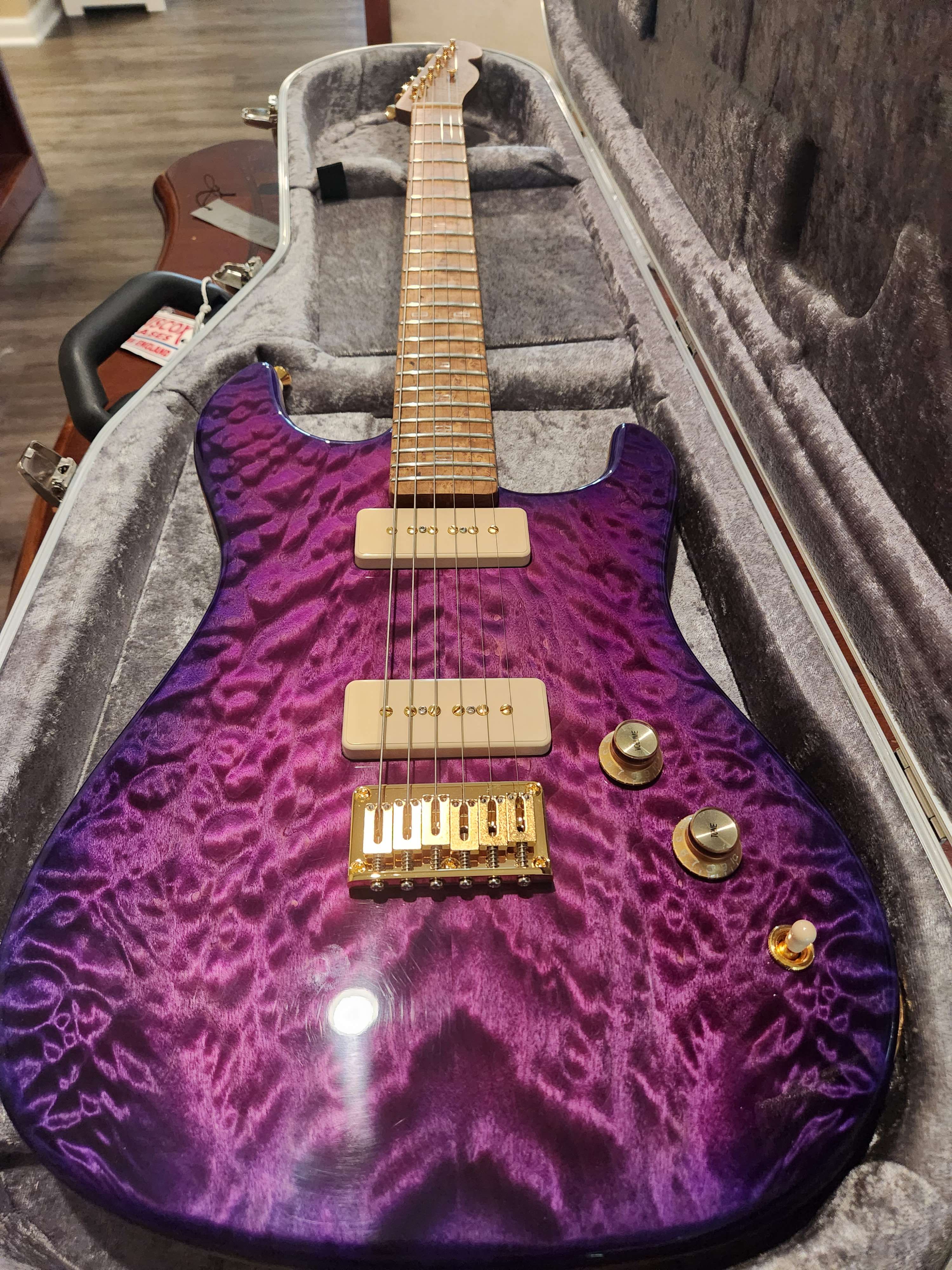With everybody and their grandma shoving their cloud into your face, I’m happy there still are flash drives for sale.
The thing I really want to see more are USB-C thumb drives. It seems they’re all usb-A or large SSD drives for USB-C. A tiny keychain sized C would be awesome.
SanDisk has an entire line of USB C thumb drives, they are my to-go choice
Sandisk is still selling their portable ssds that are failing at an alarming rate and wiping peoples data.
Dont worry though, because after slashing their price globally to sell the defective models fast, they released a firmware update for one of them and not the others.
Looking into it deeper, its clearly a hardware design flaw that WD is still denying, even after changing the hardware on new versions of the drive. The hardware change is also apprently still failing.
WD/Sandisk isnt worth trusting as storage anymore. The way they ignored customer data loss for months, pretended to fix the hardware issue with software, then only ever replied to evidence of hardware flaws when sued by a class action, should tell you they are no longer a reputable brand.
I had no idea about this, thanks for sharing
Samsung has ones that are dual side, so both USB-A and -C. Really helpful for moving files between phone and PC while still having backup storage.
I should read replies before I comment. I said the same thing. Great little drive
deleted by creator
I have a couple dual connector drives. A 3.0 on one end, and then C (or micro) on the other. Sandisk I think, maybe Samsung. But I do understand those are somewhat bulky for an everyday carry Keychain item compared to what I’m picturing you’re asking for. It does seem stranger I’m not finding as many mouse dongle size C drives as I’d expect given how many there are for A
I also have a sd/micro SD adapter that has C on one end, and A on the other that can fold away to reveal a micro. That one is great for camera pic transfers. That one is vogek which I don’t expect to be a real company
Ooh I like the idea of the micro reader with a/c/micro! If I keep a card in it it can act as a thin drive and become multipurpose!
Edit: I did some AliExpress digging and found this thing that looks like a pretty sleek solution https://a.aliexpress.com/_mq2Ck8i
I have this one and I use it exactly as you describe, when 2 card are connected it recognise them both as separate drives.
So I can backup my camera photos (SD card) to the micro SD card just using my phone via the USB C port. Then I can connect it to my desktop computer with the USB A end.
Quite a nifty device
https://www.amazon.co.uk/UGREEN-Card-Reader-Memory-Adapter/dp/B07ZKRM12C
Silicon Power does have some solid options with small A and C sticks. I have even some with micro usb inside the A connector in addition to C.
I have a sandisk one that’s both usb c and a
Samsung has a nice one that has both A and C. And it’s USB 3.1.
You need to try my grandma’s cloud, it will make you feel like a new person. Possibly a much worse person but a new one none the less
You need to try my grandma’s cloud
Is that a new euphemism for medical cannabis?
I’ve got a few cloud-connected flash drives I’d be happy to send your way.
I help out with a school activity for my kids and the organizer bought a bunch of 8 GB USB sticks off of Amazon for it, against my advice. We only needed a few hundred megs for the data, but some families had more than one kid in the group and needed 2x or 3x the data. 8 GB seemed to be the cheapest price point available in quantity at the time.
As we made the drives we found that some batches were always failing to copy properly. We then realized that it was always the batches with more data. After doing some forensic analysis, we determined that the entire batch of drives was only 512 MB of usable space, but still registered as 8 GB to the OS. Whenever the write went past that point, it corrupted files, but since the directory isn’t stored in the same place, all the files would still show up in the directory list. It would only be when you opened the file that you would realize the data was gone.
I’m just glad I found it while we could still fix the problem by buying from a better source.
If anyone thinks they might have this issue in the future, or just wants to see if they might have a fake drive, GRC’s ValiDrive was made specifically for this sort of task (testing for bad drives, but as part of a data recovery/maintenance task). Steve Gibson puts out quality software, and I can’t recommend him enough.
Damn, Steve is still around doing stuff? That guy is brilliant.
Think I first read about him in about 1992. Some of the stuff he’s written is really brilliant insight into how things work, especially storage.
Yeah, still going strong and working on SpinRite 6.1/7 to work better with modern drives. That’s actually why he made ValiDrive, because he was getting reports about these kind of problematic drives.
Also, if you’re not aware of it, check out his podcast Security Now, it’s a good listen every week and he explains concepts in a very approachable way.
Glad to see this here! Love the twit podcasts. Fuck Amazon and their apathy around any semblance of quality control or responsibility for products they ship.
Will give a listen!
Thanks for the reminder about Security Now. That’s good stuff!
I was just going to recommend his ValiDrive. Very glad to see people appreciate him and his work. He’s an absolute treasure.
His DNS checker is also excellent. And runs perfectly under WINE.
I always use f3probe when I buy a new usb drive or micro sd. I seem to have gotten lucky using Amazon in the past. It’s other suppliers that I’ve found to be most unreliable. https://fight-flash-fraud.readthedocs.io/en/latest/introduction.html
Yeah, at this point don’t buy anything on Amazon that you want to be legit.
I need some SD cards, but I’m waiting until I can make a trip to MicroCenter. No way in hell I’d risk ordering on Amazon.
Apparently the latest ones have even more usable space within the fake size: https://m.youtube.com/watch?v=UsWx1iO-aeA
Here is an alternative Piped link(s):
https://m.piped.video/watch?v=UsWx1iO-aeA
Piped is a privacy-respecting open-source alternative frontend to YouTube.
I’m open-source; check me out at GitHub.
Capitalism and the race to the bottom, of course.
💯
It’s probably a new plan to make USB sticks a subscription based system. You want access to your data? That’ll be 19.99 a month.
Nah, this is just garden variety chinesium product fraud. Unfortunately, you can make a bit of coin putting out drives that misreport the physical space available, especially if it takes a while for the purchasers to notice what they actually bought. It’s even worse when you’re looking into getting bulk orders for swag drives. Because those tend to be a race to the bottom for prices, and it’s all but guaranteed to be a good while before the drives get a real test, so it’s that much easier to get away with. And worst case, you get caught and have to make up a new white label company to sell the same trash to consumers.
Tim Cook approves
Tim Apple, you mean
My school back in the day used to sell dirt cheap diskettes of such a bad quality you had to copy everything you had on there to your PC as soon as you got home because if you waited until morning the data would already be corrupted. Funny to see flash drives going the same way.
This makes me laugh because I absolutely remember getting a faulty diskette as a kid in the early 90s. I saved my files from school fail on the library computers and crying because it took me like an hour to type up a solid 2 paragraphs.
An interesting point not touched upon is that the types of people using USB sticks has changed. Because the use of technology filters down from tech savvy, to general population, to people late to the scene or can’t change.
We are in that last stage now. They are buying by price and so easier to take advantage of.
There are machines that still use floppy disks as their only method to transfer on/off the machine. By machines I mean expensive hundreds of thousands of dollars research or production machines.
I haven’t even found the need for a thumbdrive outside of flashing firmware and storage devices. All my documents are on google drive.
I use them for:
- Music in my car
- Moving files to my locked-down work PC
- The (read only) OS drives for my Unraid NAS servers
- Media for my parents to watch when they are away on vacation and can plug it into a hotel TV
- General sneakernetting of large files
They definitely don’t get as much use as before, but I’m still using them.
Edit: please don’t downvote the person above me, they are only saying what is true for them :)
Also in a business context you need them to play displays on screens at conferences usually.
And students I imagine will frequently use them to print documents at the library, or design students at the print shop
In my experience all of this has been done wirelessly for several years.
The risk of malware means you aren’t allowed to plug in sticks. For business use you share a document or wirelessly connect to a display.
In fact our local library didn’t USB sticks eight years ago when I was researching our family tree.
Depends. on a 3x3 booth setup with just a screen on a pole with no connectivity - you don’t want to run a cable to a laptop because you’re using the table for product demos
Don’t mean this rudely, struggling to find a way that doesn’t sound condescending because I know things can be different in different regions. Didn’t realise that still happened.
I think it “just depends” - not trying to dox myself here but at cloud provider conference at Caesars forum, las vegas in summer of last year this was the setup we had.
Yeah I agree. I have a drive running Ventoy and that’s about it.
Also if I’m moving a lot of data. I’ll use a NVMe enclosure to speed up the transfer instead of network.
Be sure to have backups and not that sole location. Same is true of any physical drive, but at least a drive failure might be recoverable. A cloud storage can just be gone one day.
I think of “thumb drives” as portable SSD with USB. “Portable backup drives” have taken its place for me. Incredibly fast (NVMe SSD + USB-C), quite small (M2 card size + case), durable (same as thumb drives), growing sizes (1-2 TB affordable).
I keep my old flash drives for smaller things like bootable apps, fresh OS installs, firmware updates. I definitely have no need for mystery off-brand storage though.
deleted by creator
Data recovery firm CBL reports that memory chips in the most recent microSD cards and USB sticks are perhaps the most unreliable.

Homer: “the most unreliable so far”
USB charging cables and the adapter is getting up there.
Followed by hard drives.
the hard drive portion feels more expected because there’s moving parts in there.
with SSDs and USB sticks it’s more chanced because we can’t see the insides before buying.
maybe it’s time for a clear/neon- plastic comeback but this time with usb sticks?
I mean caveat emporium applies here and if you want cheap storage from Amazon sponsored cheap ass flash drive or when microcenter branded drivers by the checkout, those have always been the risks.
And honestly, as long as you understand that cheap shit is cheap components, I really don’t have a problem with this since this saves these chips from being instant e-waste and puts it to use.
Still got a handful of these no-name microcenter SD and USB drives going strong along with those that have up the ghost.
Did you mean caveat emptor (buyer beware), or do you refer to Amazon as caveat emporium (the beware market)?
Would Lemmings be so kind as to post their USB-A/C memory sticks of choice?
Right now I have a small collection of Kingston USB drives I bought a decade ago. Haven’t had any issues with them yet, but I know they won’t last forever. They’re all named Reebok[storage capacity] (because sneaker-net).
A colleague of mine recommended https://bulkmemorycards.com/ saying every device he’s gotten from them was exactly as advertised. I’ve yet to need to order more but I bookmarked it for the next time I need to order more boot drives
I really like what explainingcomputers did for their pi4 build, where they basically convert a m.2 SSD into a big usb thumb drive with a simple metal enclosure. Check it out, the timestamp you want is 6:25
I went this route as well. You can get a good quality usb 3.1 portable nvme enclosure for ~$20-$30 (be careful not to accidentally buy the msata version, which is cheaper but slower). Now you have a very fast thumbdrive! The main drawback is, unlike traditional thumbdrive, I can’t use it on my android phone. Not sure if higher end phone with usb 3.1 port can actually use it.
Your Android phone can mount an external drive enclosure over OTG, just make sure it’s compatible and formatted properly.
Depends on how much current the drive draws. If the m2 SSD needs more current than your regular thumb drive, your phone might not supply enough power and it stays unusable.
Besides that, as long a the enclosure uses the standard protocol and the filesystem is supported by Android, it should work
My old Android phone only has USB 2.0 port and can’t mount the external nvme drive (I tried with a USB 3.1 otg dongle). The same nvme drive with the otg dongle works on M2 MBA though.
I have an nvme enclosure with USB on one end and USBC on the other end. It reads on my Pixel phones as well as on my Samsung tablet.
Now that you mention 3.1 compatibility with devices, I wonder if my enclosure is only 3.0 or if all my devices support 3.1. I’ve never done a speed test on it, but I guess I should.
Here is an alternative Piped link(s):
Piped is a privacy-respecting open-source alternative frontend to YouTube.
I’m open-source; check me out at GitHub.
I buy SanDisk CruzerBlade drives from AliExpress. Of course, there’s a risk you get a fake one, but with how cheap they are already, it might not be worth it manufacturing fakes anyway.
There’s a scratch-off sticker at the back with a code to check on SanDisk website. It will also tell you whether it was checked before, which would mean it was copied.They don’t seem to have the best sequential write speed, but have great random-access, at least compared to some other random flash drives one of which was Panasonic drive.
This is great if you want to run programs off of the flash drive, or even a whole OS. Under normal use, even a USB 2.0 CruzerBlade performs better than my 5,400RPM SMR HDD running Linux Mint, granted you’re not copying large files or downloading stuff. Of course, in that case USB 3 version (Ultra Shift) is better.Wouldn’t buying directly from SanDisk eliminate the risk of fakes?
Directly from sandisk should be fine, but just want to point out that’s not the same as sandisk on a marketplace such as Amazon. There’s some arrangements where Amazon will combine bins of a same product and let oem lots mix with reseller lots. Sometimes knockoffs get mixed in to legit lots. Amazon can make exclusive bins for a price, of course
Perhaps.
But it seems the Chinese versions might be a bit cheaper.(nevermind, it seems the prices are just higher with both now) Also I don’t know about shipping to Slovakia.Anyway, I just checked it. After visiting the website, they redirected me to European version. I searched for Ultra Shift, I got the result, clicked on it, 404: https://www.westerndigital.com/en-ie/products/usb-flash-drives/sandisk-ultra-shift-usb
Nice…
AliExpress is not exactly known for their trustworthiness.
My SanDisk usb A/C dual 64gb has been abused for quite some time and still works perfectly. Hosted a portable windows install so I could test pcs and has probably transferred more than 2tb of GoPro footage sofar.
I don’t have a need for any (if I need USB storage for an OS image or such there’s always the card reader and a 64G Samsung MicroSD I have lying around), but if in doubt I’d go with Samsung or Crucial on the basis, just like with SSDs, that they produce their own NAND.
…and looking around it doesn’t seem that Crucial is producing USB sticks. So Samsung it is. 10 bucks for 64G for the cheapest isn’t bad if you ask me. Fast ones the cheapest seems to be around 30 bucks for 256G, 400MB/s read 110MB/s write that’s bordering on SATA speeds.
Kingston certainly is a reputable company though, they won’t use completely bargain-bin chips or pull false capacity shenanigans. But they also won’t be significantly cheaper than the chip manufacturers.
Another option would be to buy a USB case for an old SATA or M.2 SSD you have lying around, or are eyeing to upgrade. Or use your phone.
My personal preference is Patriot flash drives, and has been for the past decade. I’ve got 3 older flash drives that I would commonly use, and they were very reliable.
I just recently bought this one, as I was looking for a drive that would take full advantage of USB 3.2 speeds. It definitely does, I get 300+ MB/s writes regularly on it.
https://www.patriotmemory.com/products/rage-prime-usb-3-2-flash-drive
One decade old Kingston Datatraveler, one newer cheap Datatraveler, and a whole bunch of SATA SSDs inside usb3 enclosures
So this is how I could buy a 2 TERAbyte usb thumb drive from Ali Express for a few bucks?
You’re saying I should throw it away, right?
Because I would never be able to read the data that I thought was written to it?
You get what you measure holds true today as it always has.
I’m glad the article linked to this one:
because that has been going on for at least 15 years (that I know of). When ebay was at it’s peak it was impossible to buy a good USB stick there because it seemed you could only get 512 mb sticks disguised as 32 gb sticks with a price in between the two and coming directly from China.
The company says that in its business, it’s finding more and more devices with cut-down memory chips with manufacturer names removed
Removing the identification from the top of ICs isn’t that uncommon
Clearly discarded and unrecognizable microSD cards are also soldered onto a USB stick and managed with the external one on the USB stick board instead of the microSD’s internal controller
This makes sense, the memory controller on uSD card doesn’t normally do wear levelling and stuff that a larger flash drive does.
These chips are not completely broken, but CBL notes they come with reduced storage capacity, implying that reducing capacity was how they were salvaged.
Isn’t disabling bad blocks of memory chips and selling them at the lower capacity pretty common?
Bro you need to quit trying to justify the scammers work
Isn’t disabling bad blocks of memory chips and selling them at the lower capacity pretty common?
They’re doing that too. The real problem with these is that they misrepresent the storage size, and the firmware is set up to lie to your computer about the storage size. You can format it and it’ll seem normal. Maybe you buy one that claims to be a terabyte but only stores 100 gigs - you’ll see a terabyte in there. You copy 110 gigs or so over, you’ll see the files show up and it’ll tell you it successfully copied. No error messages, it’ll just drop those last 10 gigs. There’s not really a way to notice without using a read/write program to fill every block.
It’s a shitty way to lose your data, and you might not notice until way later. Screws over the tech illiterate - probably no idea where their homework went. It would be much less harmful if they were just selling them as reject/lower capacity.
I’m aware of those scams, but that isn’t what the article talks about:
This report doesn’t even touch on the plague of USB sticks that falsely claim to have several hundred gigabytes of capacity but only have perhaps as little as 16GB or even 8GB.
Never cheap out on data storage unless you’re okay losing what you store. Always get an independently well reviewed product from a known band
Sounds like part of the issue might be that your not-so-cheap storage might still be using the cheap components…
There’s plenty of stuff that masquerades as trusted brands, ends up mixed in the inventory of a certain large etailer and is actually fake crap under the hood. There’s also the real brands’ merch that can be good but make a run with cheap components in the name of cutting costs, or with flakey firmware that may cost reliability for a slight uptick in performance. A certain brand of SSD had the latter issue years ago, and it’s looks like there’s a lawsuit against Western Digital for that currently.
Ah yeah, I should probably have added to not buy it from Amazon, due to the mixed inventory issues you’re referring to. At least in my country, this doesn’t seem to be an issue with our other retailers.
Not good news if you can’t even trust the big brands from anyone though. Samsung and SanDisk were always my go to, but I’m reading both have had recent quality control issues
This doesn’t help with counterfeit though. So many conterfeit usb thumsticks these days. They’re might be obvious for tech-savvy users to identify (blue usb jack but slow ass usb 2.0 speed, or weird typo in device name), but most person probably wouldn’t notice they’re using conterfeit devices.
A lot of times you only use a flash drive to move files from one device to another, in which case if the quality matches the price then it might not be a big deal
I guess that would fall under the “don’t care if you lose the data” scenario.
Though even then, I’d be annoyed at my time being wasted if I couldn’t copy the file off again
I need a USB stick about once every six months to update the map in my car and pretty much every time I need to buy a new one because even though the one I used the last time was stored in a drawer for six months, it doesn’t work anymore when I need it a second time.






















